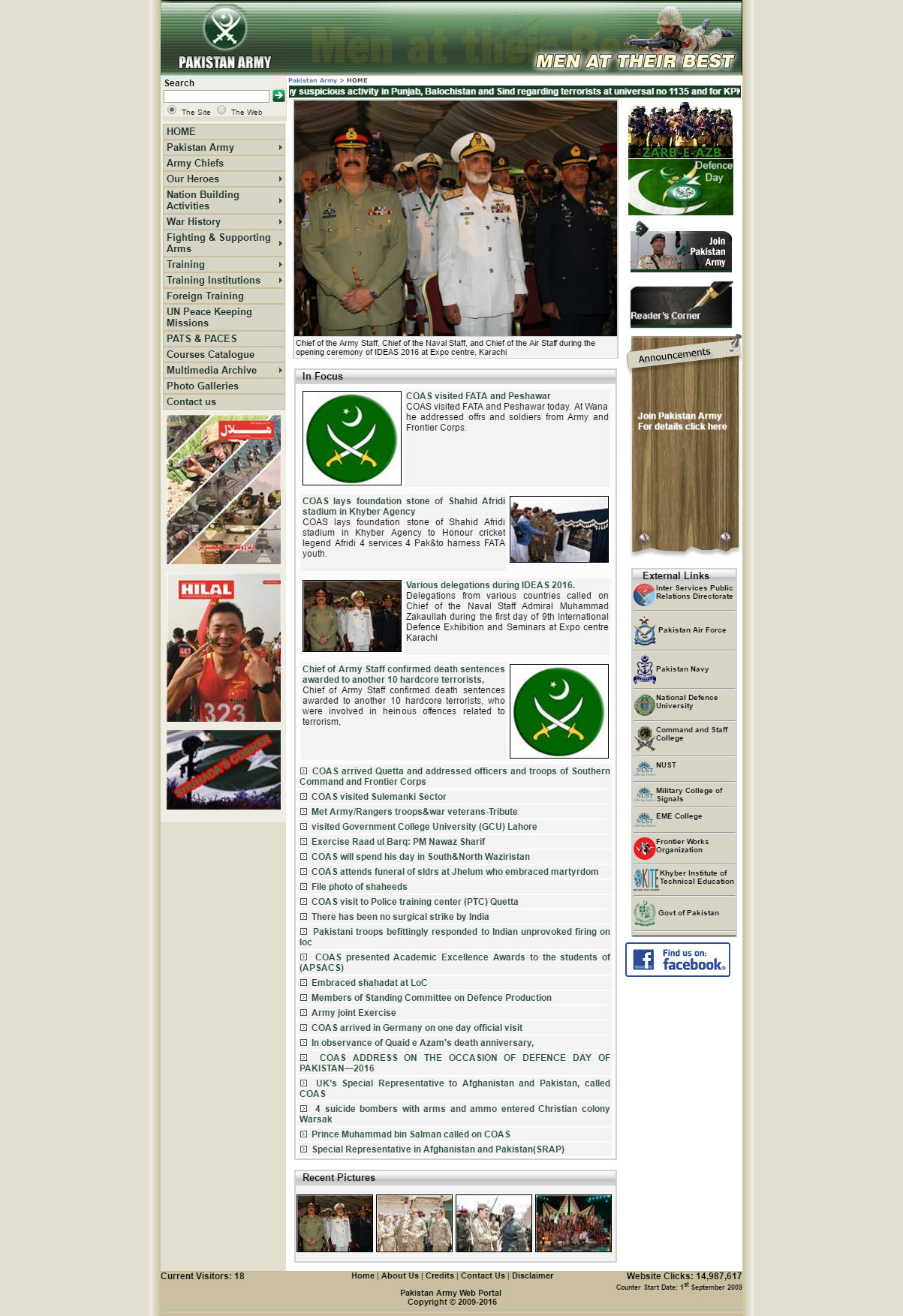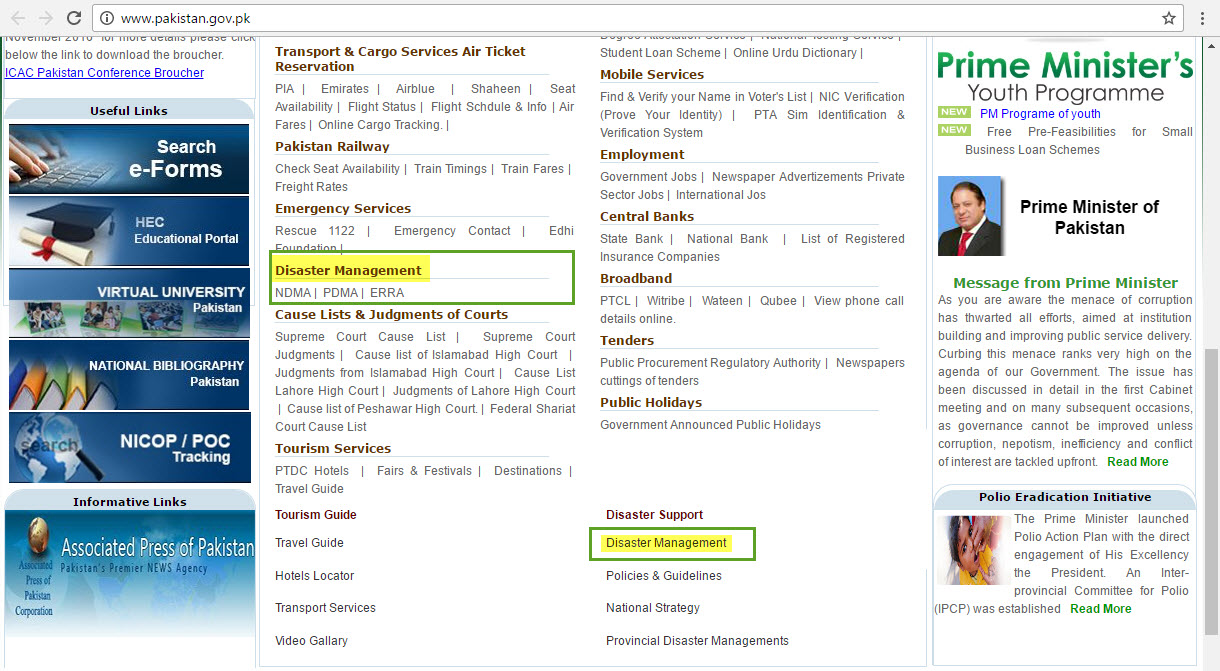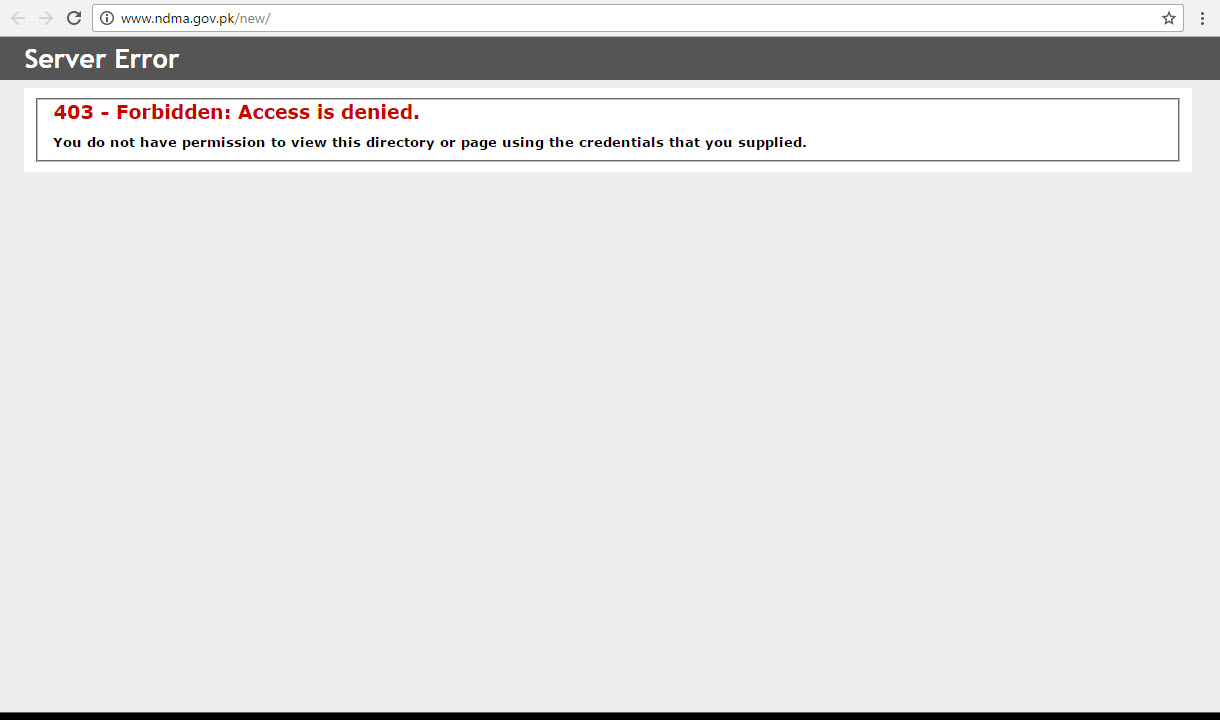When was the last time you came across a government website that didn’t cause you an eyesore while you pulled your hair out at the lack of user friendliness?
Not a handy memory that one, right?
Apart from the CPEC website that many of us are frequenting these days to keep abreast of the developments at the mammoth project, majority of the government websites do not qualify for the adjectives one could use for a good website.
Take for example the official Pakistan Army website. While the claim at the website header: MEN AT THEIR BEST, warms your heart, the website itself does little to convince you of the authenticity of the claim.
Caught you with that jarring lack of responsive design, ain’t it? However, if this was just a question of aesthetics, we wouldn’t be complaining. The latest news item at the Army web portal as of right now (11 A.M. on 29th November) is the (outgoing) COAS General Raheel Sharif’s visit to FATA on the 24th November.
This is rather ironic considering how the rest of the world, for three days now, has been abuzz with everything & anything about the appointment of the new COAS, Lieutenant General Qamar Javed Bajwa. In fact, at the moment the outgoing Army Chief General Sharif is handing over the ‘command stick’ to General Bajwa in a prestigious ceremony at Army Hockey Stadium near General Headquarters (GHQ) in Rawalpindi.
A visit to the Army web portal inspired us to explore further in the domain of good (rare), bad (mostly) and ugly, government websites. Let’s go down the rabbit-hole!
In the world of web, every organization understands how they can make users’ experience wholesome by building a website that is sleek, functional, accessible, responsive and regularly updated. Every organization understands this, but our government!
One wonders if the official memo passed on to the website development teams carries a one-liner brief: Make it so ugly that they want to claw out their eyes.
Going through the Police department’s websites across the provinces, it is interesting to note how the political leadership of the respective provinces features prominently at Punjab’s and Khyber Phaktunkhwa’s better built websites.
While visiting Karachi has become synonymous to stepping into a Castellammarese War, Sindh Police’s homepage, last updated three weeks ago, is mostly a blank space. The static website has a page dedicated to Monthly Heinous Crime List. Here’s how the official monthly record links are represented:
Balochistan’s Police department website is a sorry tale in itself. Visually an eyesore, the website homepage declares in a prominent footnote “The Balochistan Police acknowledges with thanks the support pronided by Asian Development Bank” for the development of the website. Yes, that’s what it reads.
One majorly disturbing feature of the website is the graphics at the uniquely maintained Unidentified Dead Bodies section (no other Police website has this).
Finding the need to put up google procured images with emoticon tags can, at best, be termed callous and grossly improper.
Gilgit’s Police department has no web presence.
The province of Gilgit maintains this singular government website for all its departments. Their one-liner brief to the website dev team has definitely been bold and in caps.
To have an idea of the general trend of aesthetics, functionality and authenticity, followed by our government websites, we picked three ministries’ websites at random.

Ministry of Religious Affairs’ website http://www.mora.gov.pk has last important event recorded in May 2016.
The OPHRD Ministry is visibly so bored, it hasn’t even bothered celebrating NADRA’s supremely efficient initiative of online passport renewal feature aimed to serve the overseas Pakistanis.

Ministry of Defence website http://www.mod.gov.pk/ contrary to what you may have expected, is just another dud.
Some extremely interesting findings put forth by the Stanford Web Credibility Research Project show that how well a site is designed, or not, impacts how we trust or use it. Complex design, ugly graphics and uninformative context & content can dent a user’s confidence in government’s ability to utilize his/her taxes. Extrapolating that mistrust, in today’s digital age, can cost a government massively.
While we’ve been focusing mainly over the visual and design aspects of a website, another matter of grave, read “real“, significance is of public access to government information. Instead of building a government website as a simple, authentic and publicly accessible infrastructure which shares the underlying data, these web portals have become relentless individual publicity zones.
Consider for example the Election Commission of Pakistan, ECP’s website. The website shares with you everything except what you may actually be interested in knowing: details of Parliamentarians’ assets and liabilities. In 2015 ECP made an official release of the mentioned data kind for the fiscal year of 2014, however, later without making any public announcement it withdrew all this information from its portal and the URL then provided is now but a dead link.
It may be relevant here to refer to the National Bureau of Accountability, NAB’s website as well. The website has a LOT of data to offer, however, it runs over the standard antique template of government ministries. You can plug in pretty much any ministry and see the same basic story: ugly, complex and outdated. The website has not been updated in last two months and there’s a dire need of a search feature for titles instead of having to navigate through the endless stream of case numbers.
Another interesting case is that of National Disaster Management Authority and its sister bodies.
The web addresses for all the sister organizations falling under the disaster management umbrella: NDMA, PDMA and ERRA, lead to the same page citing error 403.
A quick research shows that government websites, globally, have a tendency to fall pale in comparison to the web presence maintained by the private sector. Hence, let your heart find some solace that we are not alone.
Even in the US they found the need to establish the US Digital Service – USDS, an initiative Obama administration launched in late 2014, with the express purpose of saving federal websites from imminent disaster.
USDS’s biggest service to the world has been the formulation of the digital services “playbook” which includes, “successful best practices from the private sector and government that, if followed together, will help government build effective digital services.”
Another important milestone by USDS has been the release of new design standards for federal sites, providing a common resource to standardize and improve what the users find online. The new US federal standards consist of a visual style guide and a collection of downloadable fonts, images and software code to drive them. The colors and code in these new standards are all accessible to people with disabilities. Adopting standard better design they’re hopeful to save taxpayers time and eliminate the frustration.
This is where the decision makers from our government can take their cue from.
Meanwhile, do share with us your experience of interacting with government websites.








